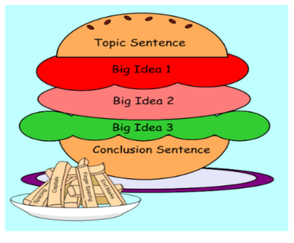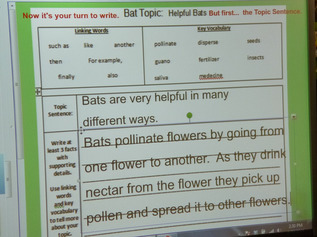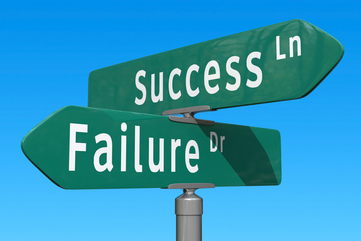|
|
what is a paragraph?
A paragraph is a group of sentences that discuss one main idea or topic.
why do you need paragraphs in the text?
It is difficult to read a block of text which has few breaks between all the sentences. The letters start to jump before your eyes, and the mind finds it hard to get what the writer is trying to tell you. You also need to break down the text in order to keep the reader's attention and guide him/her through the text. They act as signposts for the reader. In the end, paragraphs help organize your thoughts and give clarity to your ideas.
how should a paragraph look?
Paragraphs usually have three parts:
A BEGINNING:
Also called a topic sentence. This is most commonly the first sentence of the paragraph. This sentence should introduce the idea or topic you want to express in the paragraph. The sentence tells the reader of your text what the paragraph will be about.
Also called a topic sentence. This is most commonly the first sentence of the paragraph. This sentence should introduce the idea or topic you want to express in the paragraph. The sentence tells the reader of your text what the paragraph will be about.
A MIDDLE:
After the topic sentence you should have a few sentences which add some details about the the topic you introduce in the topic sentence. These sentences are called supporting sentences. They explain, expand, rephrase, describe or exemplify the idea of the topic sentence. Here you might give some facts, examples, details, arguments, quotes and so on about the topic sentence.
After the topic sentence you should have a few sentences which add some details about the the topic you introduce in the topic sentence. These sentences are called supporting sentences. They explain, expand, rephrase, describe or exemplify the idea of the topic sentence. Here you might give some facts, examples, details, arguments, quotes and so on about the topic sentence.
AN END:
After the topic sentence and a some supporting sentences, you should round off the paragraph by a concluding sentence. In this, the last sentence of the paragraph, you repeat the idea of the topic sentence, but in different words, and you make sure to create a meaningful transition to the next paragraph. It is like a summary of the topic or main idea of the paragraph, but it should also lead the reader to the next paragraph, preparing him/her.
Remember:
After the topic sentence and a some supporting sentences, you should round off the paragraph by a concluding sentence. In this, the last sentence of the paragraph, you repeat the idea of the topic sentence, but in different words, and you make sure to create a meaningful transition to the next paragraph. It is like a summary of the topic or main idea of the paragraph, but it should also lead the reader to the next paragraph, preparing him/her.
Remember:
A paragraph = a topic sentence + details + a conclusion
how can you spot a good topic sentence?
A good topic sentence should contain some of the characteristics below.
- ALL good paragraphs have ONE topic sentence, which makes clear the general topic of the paragraph.
- It is usually the first sentence of the paragraph.
- It grabs the reader's attention, keeping him/her hooked, so that he/she wants to read more.
- It makes sure to create a meningful transition (bridge) from the previous paragraph.
- It uses thought-provoking words.
- It often contains a strong verb or makes a bold statement.
- It creates questions in the reader's mind.
- NB! Even though the topic sentence introduces the topic, make sure that it does not announce it. Otherwise the reader might lose interest in your text.
ideas for linking paragraphs
Sometimes it is a good idea to use linking words or phrases in the topic sentence of the next paragraph in order to create a smooth flow between the two paragraphs. Linking words help connect what you have said in the previous paragraph to the topic in the next paragraph.
Furthermore, linking words make the text more meaningful to the reader, since they act like signposts in the text. They create a link between the ideas in the text and help the reader understand where one idea ends and the next one begins.
Here are some examples of how to link paragraphs:
Secondly, in addtion, furthermore, besides, ...
Similarly, in the same way, for instance, to be specific, ...
However, on the other hand, though, yet, despite, ...
For this reason, consequently, therefore, thus, ...
To begin with, next, then, gradually, in the end, ...
In the same way, like, as, in the same manner, ...
For additional examples, please click here.
Furthermore, linking words make the text more meaningful to the reader, since they act like signposts in the text. They create a link between the ideas in the text and help the reader understand where one idea ends and the next one begins.
Here are some examples of how to link paragraphs:
Secondly, in addtion, furthermore, besides, ...
Similarly, in the same way, for instance, to be specific, ...
However, on the other hand, though, yet, despite, ...
For this reason, consequently, therefore, thus, ...
To begin with, next, then, gradually, in the end, ...
In the same way, like, as, in the same manner, ...
For additional examples, please click here.
types of paragraphs
|
|
|
tasks
Kildehenvisninger:
http://4.bp.blogspot.com/-4zvSM2b26Ek/UWoIFIXQP8I/AAAAAAAAAIw/zm7x-sEXOeQ/s1600/Thinking+pic.jpg
http://esl.about.com/od/writingintermediate/a/paragraphs.htm https://en.islcollective.com/resources/printables/worksheets_doc_docx/writing_a_topic_sentence/paragraph-writing-topic/51090
http://www.stickyball.net/writing.html?id=511
http://www.brighthubeducation.com/middle-school-english-lessons/29748-teaching-paragraph-writing/?cid=parsely_rec
http://www.wvlln.ac.uk/uploads/whyuseparagraphs.pdf
http://esl.fis.edu/learners/read/topic1.htm
https://www.flickr.com/photos/projectdiscovery/14088078732/in/photolist-nbGxjp-nr9Ehd-nsV5Zb-nsUBEa-nr9EFu-nbGxJT-nbGKJU-nuXYYr-nbGJss-nbGJp1-nbGxaM-nsUAVp-nuXZjg-ntc3AV-nbGxdH-nsV5yw-nr9E6S-nbGxoT-nbGKM9-nbGxRX-nbGKAh-nuXZ96-nbGpiz-nbGzB1-ntegsb-nbGBTo-ntbUfg-nbGuf6-nsUsSv-nsUWb9-nbGuk6-nuXQBM-nsUWc1-nuXQFp-EMg4o-EMg4f-EM9nu-EM9mQ-EM9nq-e2B8AQ-oc6ejQ-ehrCwr-5YY5E6-xzDbE6-5Z3hXS-5XoJBE-ehxizq-jCpJFm-jCnC8n-jCmF8V/
http://cdn.grid.fotosearch.com/OJO/OJO265/pe0073783.jpg
http://www.stickyball.net/writing.html?id=511
http://www.essayzone.co.uk/blog/how-to-begin-a-new-paragraph-useful-linking-words-and-phrases/
http://www.grammarbank.com/connectives-list.html
http://www.lokus.no/open/stages/Stages-102/The-Exam/Linking-Words/About-Linking-words
http://www.bbc.co.uk/worldservice/learningenglish/flatmates/episode64/languagepoint.shtml
https://c1.staticflickr.com/9/8057/8226451812_88007f08df_b.jpg
https://pixabay.com/en/smilie-like-smile-face-thumbs-up-678967/
http://facweb.northseattle.edu/ssolomon/Grammar%20Writing%203/102_Writing_Booklet_HW_Introductory.pdf
http://www.gyldendal.no/grs/Enter/Dette-er-Enter/Undervisningsopplegg-m.m?utm_source=gyldendal-undervisning&utm_medium=Nyhetsbrev&utm_content=unspecified&utm_campaign=unspecified
http://4.bp.blogspot.com/-4zvSM2b26Ek/UWoIFIXQP8I/AAAAAAAAAIw/zm7x-sEXOeQ/s1600/Thinking+pic.jpg
http://esl.about.com/od/writingintermediate/a/paragraphs.htm https://en.islcollective.com/resources/printables/worksheets_doc_docx/writing_a_topic_sentence/paragraph-writing-topic/51090
http://www.stickyball.net/writing.html?id=511
http://www.brighthubeducation.com/middle-school-english-lessons/29748-teaching-paragraph-writing/?cid=parsely_rec
http://www.wvlln.ac.uk/uploads/whyuseparagraphs.pdf
http://esl.fis.edu/learners/read/topic1.htm
https://www.flickr.com/photos/projectdiscovery/14088078732/in/photolist-nbGxjp-nr9Ehd-nsV5Zb-nsUBEa-nr9EFu-nbGxJT-nbGKJU-nuXYYr-nbGJss-nbGJp1-nbGxaM-nsUAVp-nuXZjg-ntc3AV-nbGxdH-nsV5yw-nr9E6S-nbGxoT-nbGKM9-nbGxRX-nbGKAh-nuXZ96-nbGpiz-nbGzB1-ntegsb-nbGBTo-ntbUfg-nbGuf6-nsUsSv-nsUWb9-nbGuk6-nuXQBM-nsUWc1-nuXQFp-EMg4o-EMg4f-EM9nu-EM9mQ-EM9nq-e2B8AQ-oc6ejQ-ehrCwr-5YY5E6-xzDbE6-5Z3hXS-5XoJBE-ehxizq-jCpJFm-jCnC8n-jCmF8V/
http://cdn.grid.fotosearch.com/OJO/OJO265/pe0073783.jpg
http://www.stickyball.net/writing.html?id=511
http://www.essayzone.co.uk/blog/how-to-begin-a-new-paragraph-useful-linking-words-and-phrases/
http://www.grammarbank.com/connectives-list.html
http://www.lokus.no/open/stages/Stages-102/The-Exam/Linking-Words/About-Linking-words
http://www.bbc.co.uk/worldservice/learningenglish/flatmates/episode64/languagepoint.shtml
https://c1.staticflickr.com/9/8057/8226451812_88007f08df_b.jpg
https://pixabay.com/en/smilie-like-smile-face-thumbs-up-678967/
http://facweb.northseattle.edu/ssolomon/Grammar%20Writing%203/102_Writing_Booklet_HW_Introductory.pdf
http://www.gyldendal.no/grs/Enter/Dette-er-Enter/Undervisningsopplegg-m.m?utm_source=gyldendal-undervisning&utm_medium=Nyhetsbrev&utm_content=unspecified&utm_campaign=unspecified
Sist redigert:
20.10.15 M.I.
20.10.15 M.I.




